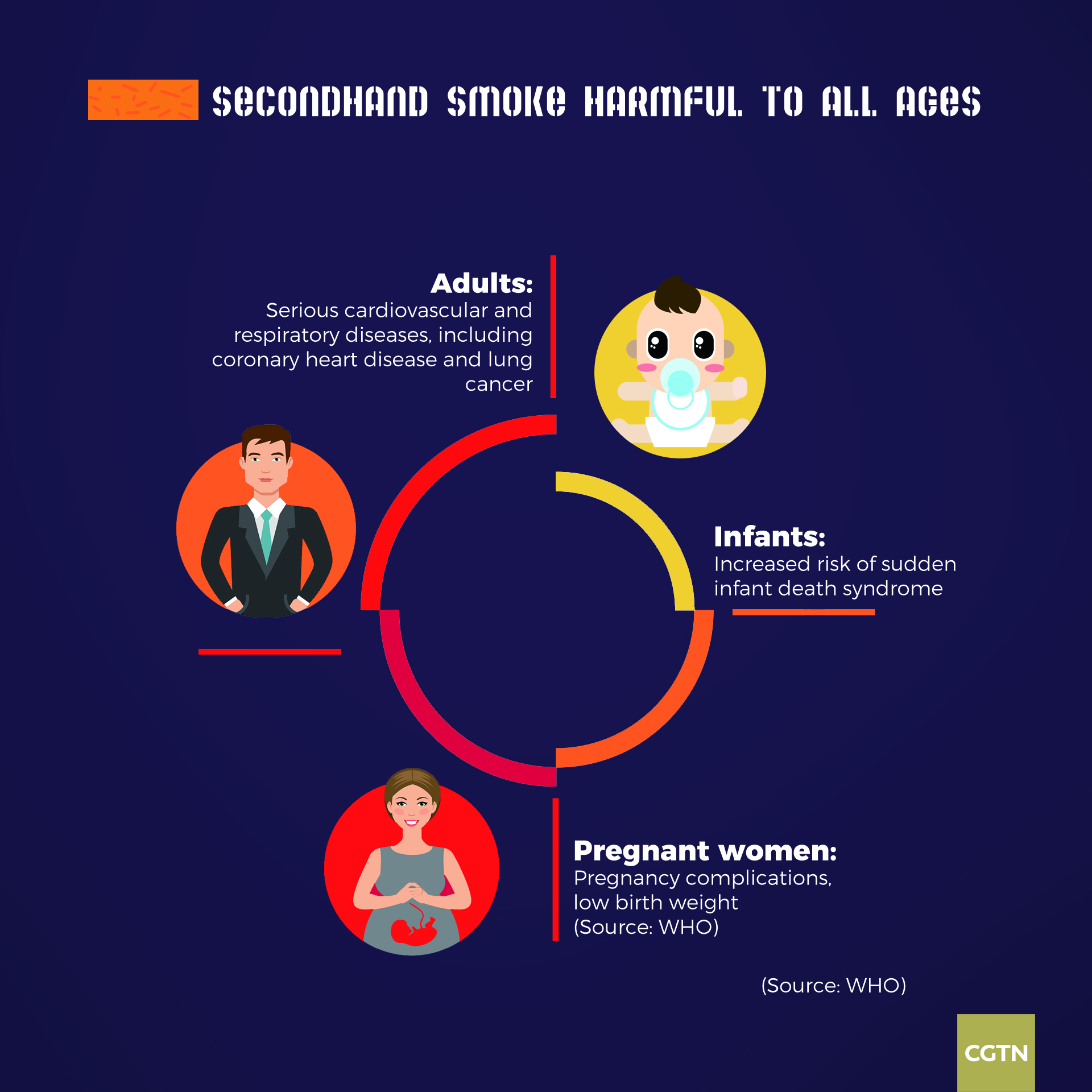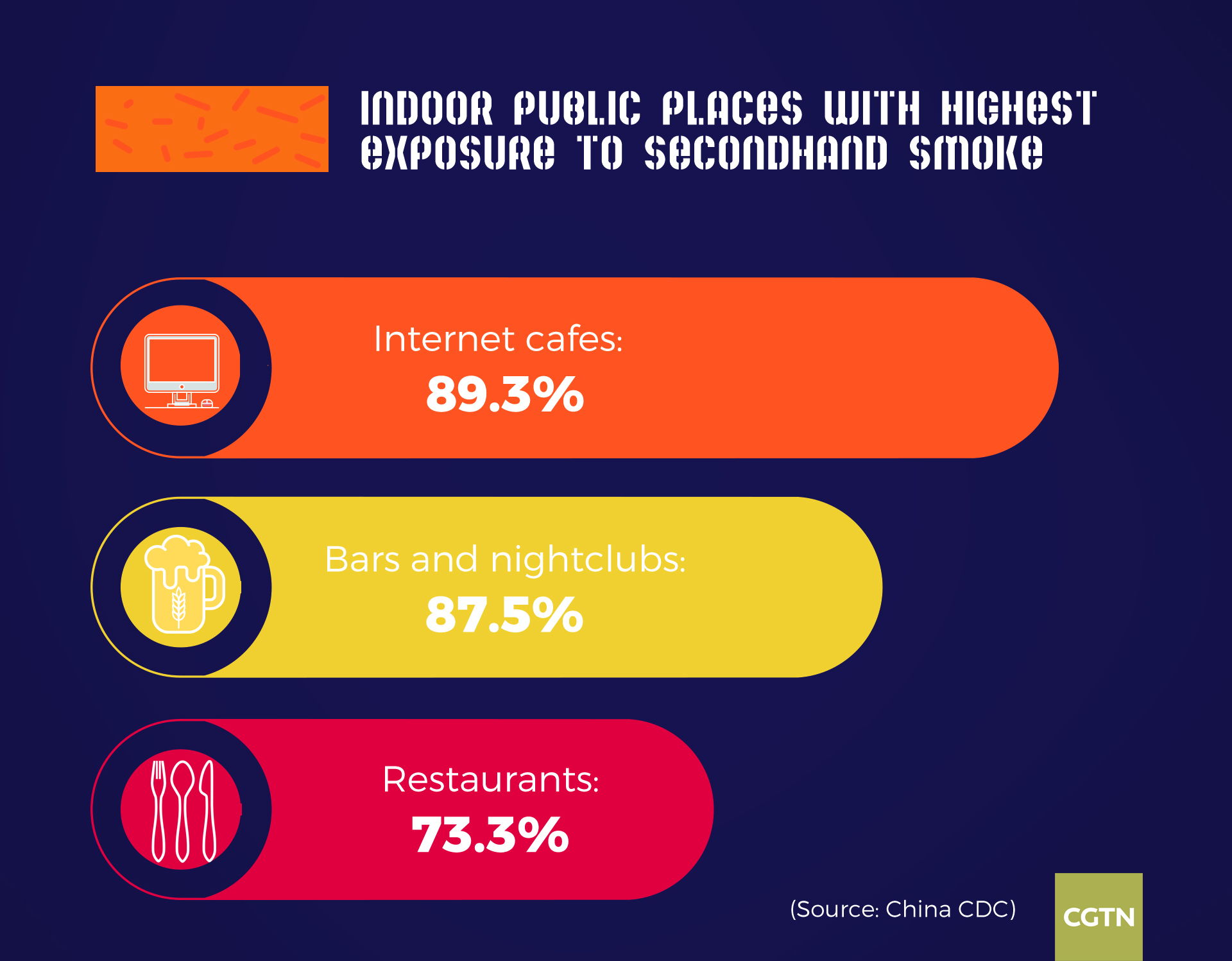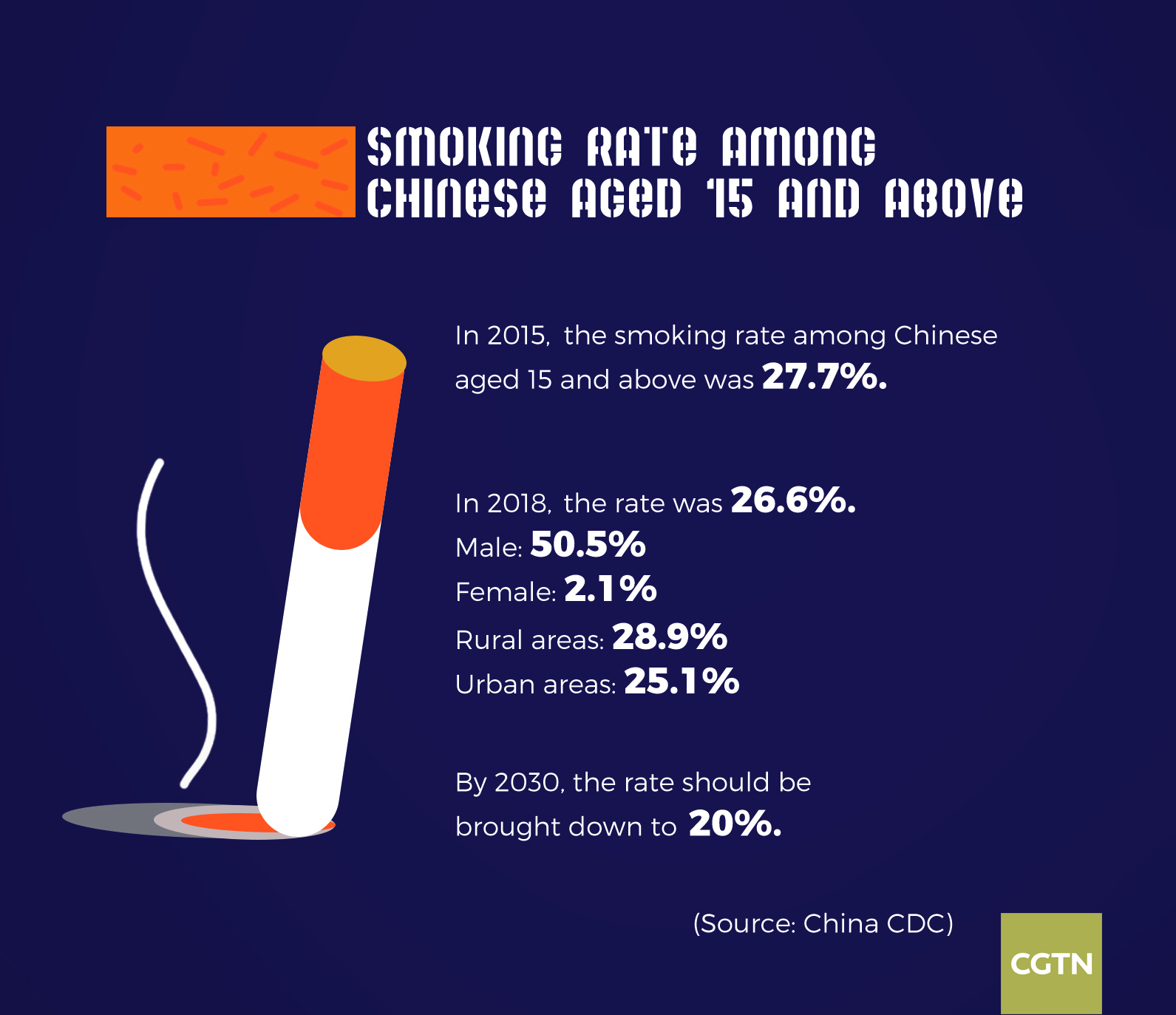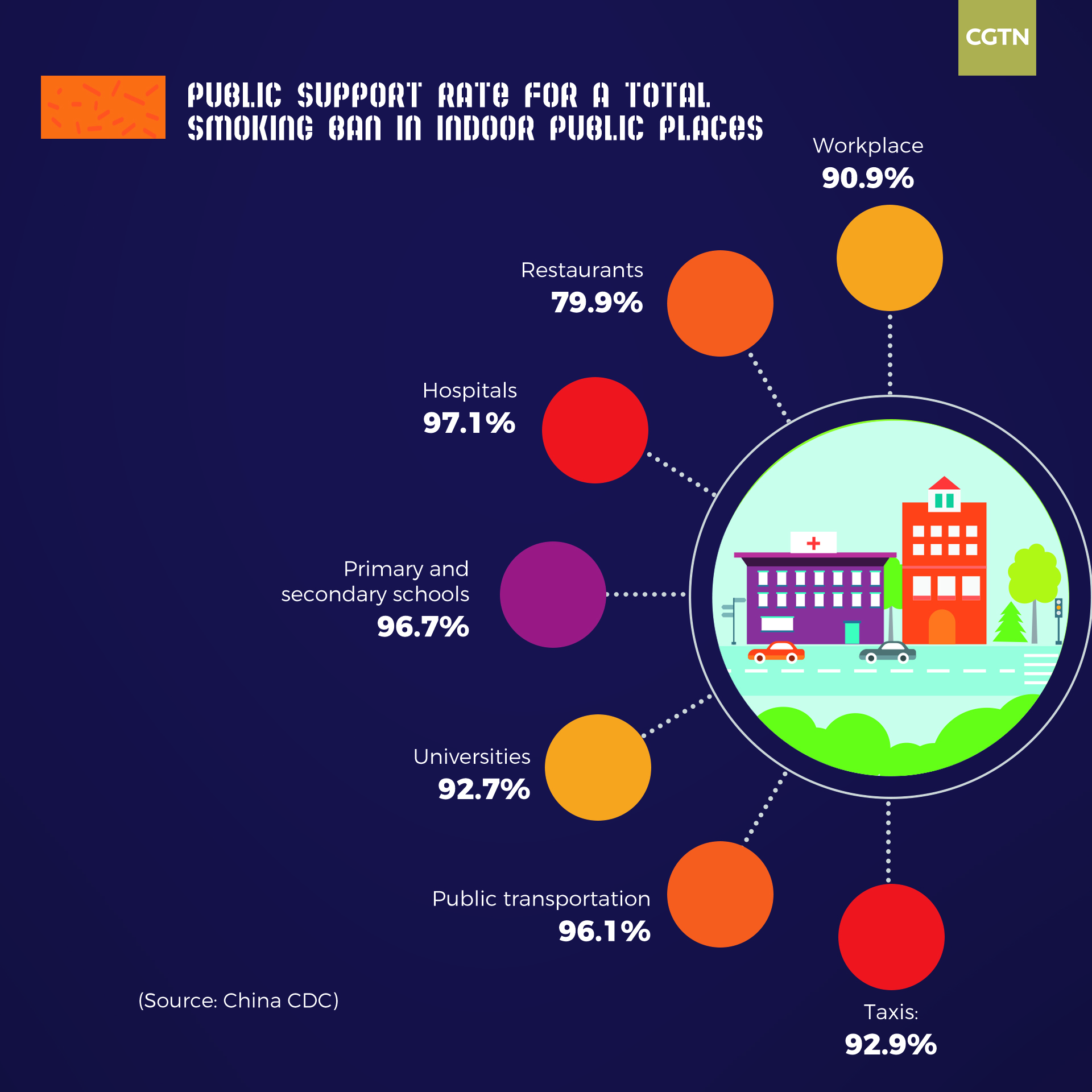
Health
15:56, 31-May-2019
Secondhand smoke claims 1.2 million lives worldwide annually
By Gao Yun

The risks that come with smoking can affect non-smokers through second-hand smoke, says new data by the World Health Organization (WHO).

Around 1.2 million non-smokers worldwide die due to exposure to secondhand smoke every year. /VCG Photo
Around 1.2 million non-smokers worldwide die due to exposure to secondhand smoke every year. /VCG Photo
Every year, over eight million deaths are caused by tobacco, among which around 1.2 million are non-smokers exposed to secondhand smoke. Children are also affected, with 65,000 children dying from diseases aroused by smoke, according to the WHO data released ahead of World No Tobacco Day on Friday.
"Half of the people who die from smoking or secondhand smoke exposure are women, and five percent of them are children under the age of 15," said Sun Jiani from the WHO Representative Office in China.
Secondhand smoke harmful to all ages
Secondhand smoke refers to the smoke that permeates restaurants, offices or other enclosed spaces when people burn tobacco products, said WHO. The smoke contains over 4,000 chemicals, in which at least 250 are known to be harmful, and over 50 cause cancer.
"In the case of insufficient combustion, the harmful components produced by the unit mass of secondhand smoke are more toxic than the direct smoke," said Guo Xiaoliang, deputy director of the Health Education Institute of Hebei Provincial Center for Disease Control and Prevention.
As tobacco products are often inadequately burned during combustion, the content of harmful components in secondhand smoke can be several times or even dozens of times higher than that in direct smoke, Guo added.

CGTN Infographic by Li Yueyun
CGTN Infographic by Li Yueyun
China sees improved secondhand smoke exposure
In China, one death is caused by tobacco every 30 seconds, with 100,000 deaths caused by secondhand smoke every year, said Sun.
The good news is that the condition of secondhand smoke exposure has improved in China, according to the latest 2018 China adult tobacco survey released by Chinese Center for Disease Control and Prevention (China CDC), and public support for smoke-free environmental policies has increased,
The rate of secondhand smoke exposure among non-smokers was 68.1 percent last year, a decrease from 72.4 percent in 2010.

CGTN Infographic by Li Yueyun
CGTN Infographic by Li Yueyun
The smoking rate of Chinese people aged 15 and above showed a decreasing trend last year, said the report.

CGTN Infographic by Li Yueyun
CGTN Infographic by Li Yueyun
The survey also found an increase in public support for banning smoking in indoor public places and improved public awareness of the dangers of smoking.

CGTN Infographic by Li Yueyun
CGTN Infographic by Li Yueyun
"We are delighted to see a decline in the smoking rate from 27.7 percent in 2015 to 26.6 percent... and the first-ever decline in the total number of smokers, which is very encouraging. But it is still a long way from the goal set by Health China 2030 to reduce the rate to 20 percent by that year," said Sun.
(Cover via VCG)

SITEMAP
Copyright © 2018 CGTN. Beijing ICP prepared NO.16065310-3
Copyright © 2018 CGTN. Beijing ICP prepared NO.16065310-3